Hair Transplant in Incheon
Search and Compare the Best Clinics and Doctors at the Lowest Prices for Hair Transplant in Incheon
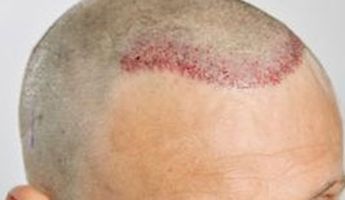
Find the best clinics for Hair Transplant in Incheon
With Medijump you can browse 1 facilities offering Hair Transplant procedures in Incheon. The cheapest price available is $2,000 in Seoul
Hair Transplant in South Korea
Price: $ 2,000
Hair Transplant in Seoul
Price: $ 2,000
Hair Transplant in Incheon
Price: $ 2,973
Egypt offers the best prices Worldwide
Price: $ 126
From 4 verified reviews
JW B, 03 July 2020
Good facilities and competent doctors. All friendly nurses are satisfied. The quality of the university hospital is very different. I look forward to further development as a representative hospital in our region.
- Home
- South Korea
- Incheon
Compare Before & After Photos of _procedure_photos.phpHair Transplant
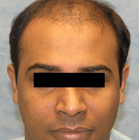
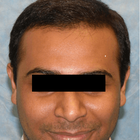
Front view
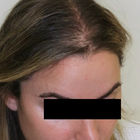
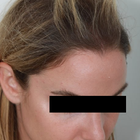
Half-side view
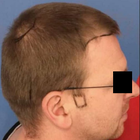
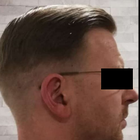
Full-side view
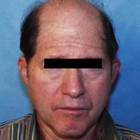
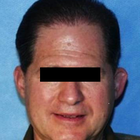
Front view
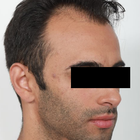
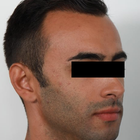
Half-side view
WHY US?
At Medijump, we're making medical easy. You can search, compare, discuss, and book your medical all in one place. We open the door to the best medical providers worldwide, saving you time and energy along the way, and it's all for FREE, no hidden fees, and no price markups guaranteed. So what are you waiting for?

Free

Best Price

Widest Selection

Risk-Free
What you need to know about Hair Transplant in Incheon

Hair Transplantation, also known as hair restoration surgery, is the surgical process of moving hair follicles from one part of the body that is rich in hair (known as a donor site) and embedding them at the the bald area of the head (recipient site). The medical course of action that aims at addressing hair loss issues and improving aesthetics. While there are many causes of hair loss, the most common reason, especially for men, is genetics. Hereditary hair loss as men age is the number one leading factor of baldness.
It is a minimally invasive procedure, performed under local anesthetic and is most commonly used to treat male baldness, but the technique can also be used to restore eyelashes, eyebrows, beard hair and to fill in scars. The procedure usually lasts between 4 to 8 hours, depending on the number of grafts needed. This procedure is a long-term solution to hair loss, with most patients experiencing significant improvement in hair growth after six months to a year.
Why do people experience hair loss?
We lose an average of 100 hairs a day, however, these hairs are immediately replaced by new hairs growing at the same time. Hair loss can occur suddenly or gradually and it may affect your scalp or your entire body, depending on what’s causing it. Other causes of hair loss may include:
- Stress - a lot of people may experience hair thinning for several months due to a physical or emotional shock. However, this type of hair loss is only temporary.
- Certain Hairstyles and treatments - hairstyles that pull your hair like tight pigtails, ponytails or braids can actually cause traction alopecia. Permanent hair treatments and hot oil treatment may also lead to hair loss; these hair treatments cause inflammation to the hair follicles. If there is scarring, hair loss may be permanent.
- Radiation Therapy - for example, during cancer treatment.
- Certain medical conditions and hormonal changes - in women, hormonal changes due to pregnancy, childbirth menopause or thyroid problems may cause temporary or permanent hair loss. As for medical conditions, hair loss may be due to alopecia, scalp infections like ringworm or a hair-pulling disorder known as trichotillomania.
Sudden hair loss may also be a sign of a specific medical condition that will require treatment. You will need to consult your doctor if you experience more than your usual hair loss whenever you are combing or washing your hair and also if you encounter a sudden patchy loss of hair.
A hair transplant is a common treatment performed on people who are experiencing baldness due to aging and heredity factors. However, if you are completely bald with absolutely no hair left, then this type of treatment may not be applicable for you, as you won't have sufficient donor hair to supply.
What is the cost of Hair Transplant in Incheon?
The cost of Hair Transplant in Incheon is typically influenced by various factors. These may include the experience and reputation of the surgeon, the complexity of your case, and the total number of grafts needed. Moreover, the pricing strategy followed by the medical establishment also plays a significant role. Some clinics charge based on the number of grafts transplanted, while others might price the procedure as a package. The exact price can therefore only be determined in consultation with a trusted clinic. While it can appear costly to some, the Hair Transplant is an investment in one's appearance and self-confidence.
What Does The Procedure Involve?
The hair transplant procedure involves taking hair from your Donor Site and transferring it to the area(s) lacking in hair, the Recipient Site, and a local anesthetic will be applied before the procedure begins to limit any discomfort.
There are two main methods used in a hair transplant procedure:
- Follicular Unit Transplantation (FUT) - strips of tissue will be removed from your donor area, these strips will be cut into individual follicular units. Small cuts will be made on your scalp where the follicular unit grafts will be placed. This method is becoming less popular.
- Follicular Unit Extraction (FUE) - individual hair follicles will be directly extracted from your donor area and moved to your recipient site using a specialist microsurgical needle. FUE is now the preferred technique for hair transplants as it will not leave a linear scar at the back of the head.
Procedures are undertaken by a fully qualified technician and usually involve the extraction of around 3,000 grafts, going up to 4,000. Any more, and it will likely require two separate sittings to complete.
How Long Should I Stay in Incheon for a Hair Transplant Procedure?
Hair transplants are usually performed as an outpatient procedure. Thus, you will be able to go back to your hotel immediately after. Both methods used for Hair Transplant treatments usually take 4-8 hours to complete. With FUE technique, there are no stitches or staples to be removed, so you won't need to stay in Incheon for long after the procedure, just allow a day or two to be sure before traveling home.
You should expect to pay the clinic another visit the day after the treatment so the doctor can remove the bandage, examine the areas of intake and transplantation of follicles, before washing your hair using a special technique that you will learn to perform by yourself. Finally, the doctor will provide you with a special shampoo that will help to restore the skin.
What's the Recovery Time for Hair Transplant Procedures in Incheon?
Your scalp will continue to be sensitive to pain for a few days, during which time you should continue to take the medications provided by the doctor. On top of the pain killers and anti-inflammatory meds, you may also be given antibiotics to lessen the risk of infection, as uncommon as this may be.
You should expect to return to work and your daily routine, including exercise, after 5 days. However, the signs of a hair transplant will remain for at least another 2-3 weeks, at which point the newly transplanted hairs will start to fall out - but don't be alarmed! This is to be expected as you've just had a follicle extraction, so dead hair will simply make way for new hair over the coming weeks and months.
If the average person's hair only grows at a centimeter per month, then it will take some time before you can wear your hair long again. You could expect to display short and consistent hair just 4-6 weeks after the treatment.
What sort of Aftercare is Required for Hair Transplant Procedures in Incheon?
After the procedure is complete, anti-swelling medication and painkillers will be available and you'll be provided with various essentials to see you through the days immediately following. Post-op items may include; specialist shampoo, lotion, multivitamins, a special hat, a headband, neck pillow, and wound dressing.
Having already been provided with your post-op aftercare products, you may also be offered Platelet Rich Plasma (PRP) Therapy to help stimulate the hair follicles and encourage hair growth. This is where a small amount of blood is taken, rich in plasma, which is then injected into the Recipient Site.
What's the Success Rate of Hair Transplant Procedures in Incheon?
The success rate for hair transplants is one of the highest, at 98% and is considered the only truly effective remedy for hair loss.
The effectiveness of Hair Transplant treatments is significantly shaped by the surgeon's expertise who executes the process. A seasoned and competent surgeon employs sophisticated methods to prevent harm to the transplanted hair follicles during the process, which leads to a higher likelihood of success. Additionally, the ability of the surgeon to place the grafts in an attractive manner that resembles natural hair growth further enhances the perceived successfulness of the result.
Beyond the competency of the surgeon, the overall health status and lifestyle choices of the patient greatly impact the treatment's effectiveness. Subpar habits such as excessive smoking and alcohol intake can obstruct the recovery process and influence the result adversely. Illnesses like diabetes can also interfere with the likelihood of success.
Consideration of the donor hair's quality is another aspect that may affect the success of the procedure. Generally, those with robust, plentiful hair in the donor region have a higher success rate as compared to individuals with sparse or poor-quality hair. The availability of more follicles for transplantation yields better results. A detailed examination is carried out before the Hair Transplant to verify the quantity and quality of the donor's hair.
Are there Alternatives to a Hair Transplant?
Laser therapy is one alternative to a hair transplant. During this procedure, a low-level laser device will be used as a treatment for a hair loss specifically caused by genetics. This low-level laser with a wavelength of 650 nanometres can actually stimulate your hair growth. However, long term effects for this type of alternative still remains uncertain.
PRP Therapy is another alternative you can consider. This type of treatment will make use of your own blood to promote hair growth. Your blood will be spun in a centrifuge to separate your blood’s plasma component from your red and white blood cells. Plasma contains many growth factors that promote hair growth when injected into the scalp.
Other non-surgical alternatives could include simply shaving all your hair off, trying other hairstyles or using a wig or hairpiece.
How do FUT and FUE Compare?
The two most common techniques used are the Follicular Unit Transplant (FUT) and the Follicular Unit Extraction (FUE). How do they compare?
1. FUT, also referred to as FUSS (Follicular Unit Strip Surgery), involves the removal of a strip of skin from the back of the head containing lots of hair follicles, which is stitched up and hidden by the surrounding hair. Then the strip of follicles is divided into 500-2,000 tiny grafts containing just a few hairs. These are then embedded across the bald area of the head.
2. FUE does not require a strip of skin to be removed, instead, the hair follicles are individually removed from the donor site and positioned across the bald area in tiny slits created by a scalpel or needle.
What are the Risks Associated with Hair Transplant?
Like any surgical procedure, Hair Transplant carries certain risks, although they are relatively rare and usually minor if performed by a skilled and experienced surgeon.
Some potential risks and side effects could include:
- Scarring is the most common side effect (only applicable to FUT)
- Infections
- Temporary loss of sensation around the surgical sites
- Inflammation of hair follicles (folliculitis)
- Temporary scalp pain, itching, and swelling.
- Unnatural-looking hair growth
Whilst the information presented here has been accurately sourced and verified by a medical professional for its accuracy, it is still advised to consult with your doctor before pursuing a medical treatment at one of the listed medical providers
No Time?
Tell us what you're looking for and we'll reachout to the top clinics all at once
Enquire Now

Popular Procedures in Incheon
Prices Start From $153

Prices Start From $500

Prices Start From $4

Prices Start From $500

Recommended Medical Centers in Incheon for Hair Transplant

- Interpreter services
- Translation service
- Religious facilities
- Medical records transfer
- Medical travel insurance
- Health insurance coordination
- TV in the room
- Safe in the room
- Phone in the room
- Private rooms for patients available

- Interpreter services
- Translation service
- Religious facilities
- Medical records transfer
- Medical travel insurance
- Health insurance coordination
- TV in the room
- Safe in the room
- Phone in the room
- Private rooms for patients available

- Interpreter services
- Translation service
- Religious facilities
- Medical records transfer
- Medical travel insurance
- Health insurance coordination
- TV in the room
- Safe in the room
- Phone in the room
- Private rooms for patients available

- Interpreter services
- Translation service
- Religious facilities
- Medical records transfer
- Medical travel insurance
- Health insurance coordination
- TV in the room
- Safe in the room
- Phone in the room
- Private rooms for patients available

- Interpreter services
- Translation service
- Religious facilities
- Medical records transfer
- Medical travel insurance
- Health insurance coordination
- TV in the room
- Safe in the room
- Phone in the room
- Private rooms for patients available

- Interpreter services
- Translation service
- Religious facilities
- Medical records transfer
- Medical travel insurance
- Health insurance coordination
- TV in the room
- Safe in the room
- Phone in the room
- Private rooms for patients available

- Interpreter services
- Translation service
- Religious facilities
- Medical records transfer
- Medical travel insurance
- Health insurance coordination
- TV in the room
- Safe in the room
- Phone in the room
- Private rooms for patients available

- Interpreter services
- Translation service
- Religious facilities
- Medical records transfer
- Medical travel insurance
- Health insurance coordination
- TV in the room
- Safe in the room
- Phone in the room
- Private rooms for patients available

- Interpreter services
- Translation service
- Religious facilities
- Medical records transfer
- Medical travel insurance
- Health insurance coordination
- TV in the room
- Safe in the room
- Phone in the room
- Private rooms for patients available

- Interpreter services
- Translation service
- Religious facilities
- Medical records transfer
- Medical travel insurance
- Health insurance coordination
- TV in the room
- Safe in the room
- Phone in the room
- Private rooms for patients available
Hair Transplant in and around Incheon
About Incheon
Incheon is a bustling metropolis located 36km west of Seoul. With about 3 million people living in the city, Incheon is the third most populous city in South Korea. The city is the heart of the Capital Industrial Region and is a major international transport hub for South Korea. Tourists will find historic attractions that date back nearly 5.000 years, gastronomic scenes, fairytale wonderland, picturesque islands, as well as high-tech medical institutions.
Medical tourism has become one of the biggest businesses in Incheon and is supported by the government. In December 2018, the government opened the Medical Tourism Support Center at Incheon International Airport. The center helps medical tourists to conveniently book medical procedures upon landing in South Korea. Medical consultants and nurses who can speak various languages will provide medical consulting services and information regarding medical tourism.
Domestic and International tourists usually come to Incheon for cosmetic surgery (especially for those who are interested in K-beauty), cosmetic dentistry, and health improvement. Incheon’s medical tourism attracts medical tourists for the following reason:
- Hospitals and medical facilities equipped with high-tech medical devices.
- Outstanding doctors and medical practitioners to ensure excellent service and care.
- Cost-effective and high-quality healthcare.
Popular Areas in Incheon
Incheon is steeped in history. Tourists can visit Walmido, a notable site that served as Incheon Landing Operations during the Korean War. Wolmi Theme Park had transformed Walmido into the best spot to have fun. Jayu Park is also known as the ‘Park of Freedom’ and has a General MacArthur statue as the centerpiece. The park offers a fantastic view of its surrounding mountains, downtown Incheon, the port, and the sea. Incheon’s China Town is said to be the best China Town in South Korea with its museum, galleries, and green spaces.
One of Korea’s favorite dishes, Jjajangmyeon, was created in Incheon. Learn more about the history and influence of black soybean noodles in the Jjangmyeon museum, or try them in the best Jjangmyeon restaurant in the world: Goghwachun.
Incheon is home to small, beautiful islands that offer a wonderful escape from the metropolitan city. One of the most popular islands is Muuido. The island has two main beaches: Silmi Beach and Hanage Beach. Both are equally pretty and equipped with seafood restaurants and camping facilities.
Weather and Climate in Incheon
Incheon has four distinct seasons.
- Spring starts from April to June, the city will be full of pink cherry blossoms. Tourists can expect mostly sunny days in spring, making it a popular time of the year to visit Incheon.
- Summer falls between late June and August; the temperature is generally warm with an average of 20 - 29°C but it often rains during summer.
- Autumn has a mild temperature around 11-25°C, the city will be colorful as the autumn leaves start to bloom.
- Winter falls between December and March.
Getting Around in Incheon
Incheon International Airport is the largest airport in South Korea and one of the busiest airports in the world. It is rated as the best airport worldwide and cleanest airport in the world. The airport serves domestic and international flights. The Airport connects South Korea with almost every other country in the world. Major airlines, as well as budget airlines such as Eastar Jet, AirAsia X, and VietJet Air, operates flights from this airport.
To get to the city center from Incheon International Airport, tourists can take a taxi, a bus. Taxis use meters and the base fare is 3.800KRW, there’s an additional 20% late-night charge from 0.00 am – 04.00 am. Tourists are advised to catch taxis in the designated taxi stop to avoid third-party companies who pretend to be taxis and charge unfairly.
There are several ways to get around in Incheon. Subway is the fastest option to get around, the subway lines will take visitors to major districts in the city. Fares start at 900KRW; tourists can purchase transportation card at the automated machines in the subway station or convenience stores.
Buses are also a great option. The routes run through almost every neighborhood in Incheon. The green buses will take passengers around the local neighborhood; blue buses will take passengers district to district. Green/White buses and Red buses are for long-distance travel, they will take passengers to Buncheon and Seoul. The fares range from 800KRW to 2.500KRW, pay with exact change, or use a transportation card that can be purchased from convenience stores.
The best way to get around if you need flexibility is by taxis. The base fare is 2.600KRW and will increase with the distance. Note that taxi drivers usually don’t speak English.
Tourist Visas in Incheon
Foreign citizens of 107 countries do not require a visa to enter South Korea for 180, 90, 60, and 30 days depending on the country. Citizens of other countries need to apply and obtain a visa before visiting South Korea.
To apply for a visa, South Korea provides an electronic visa application through Korea Visa Portal or you can go to the embassies or consulates of South Korea in your country.
Additional Information
- Local Currency: The currency in South Korea is Korean Won (KRW). 1USD converts to 1149.00KRW.
- Money & Payments: Tourists can withdraw money from the ATMs with a ‘Global’ sign. Credit cards are widely accepted in the city but small restaurants and stalls only accept cash. Make sure to always carry some cash. Tourists can exchange most of the major currencies to KRW in banks and moneychangers. Tipping is generally not expected so tourists do not need to tip.
- Local Language: Korean and Korean Sign Language are the official languages of South Korea. The script is written in Hangul. Most store and hotel employees in the city know some English. All airports and train station signs are written in Hangul as well as English. Major tourists’ attraction typically has English signs.
- Local Culture and Religion: 50.1% of Incheon’s population is not religious although there are some major religions in Incheon including Christianity and Buddhism. Buddhism is an old religion that has been practiced in South Korea for a long time, but more people in Incheon follows Christianity.
- Public Holidays: Incheon follows the Gregorian calendar. The city hosts Pentaport Rock Festival, an annual music festival that takes place around August.
Popular Searches
- Plastic Surgery in Thailand
- Dental Implants in Thailand
- Hair Transplant in Thailand
- Breast Augmentation Thailand
- Gastric Sleeve in Thailand
- Gender Reassignment Surgery in Thailand
- Laser Hair Removal in Bangkok
- Botox in Bangkok
- Dermatology in Bangkok
- Breast Augmentation in Bangkok
- Coolsculpting in Bangkok
- Veneers in Turkey
- Hair Transplant in Turkey
- Rhinoplasty in Turkey
- Stem Cell Therapy in Mexico
- Rhinoplasty in Mexico
- Liposuction in Mexico
- Coolsculpting in Tijuana
- Rhinoplasty in Korea
- Scar Removal in Korea
- Gastric Sleeve in Turkey
- Bone Marrow Transplant in India
- Invisalign in Malaysia
- Plastic Surgery in the Dominican Republic
- Tummy Tuck in the Dominican Republic
- Plastic and Cosmetic Surgery in Poland
- Rhinoplasty in Poland
- Hair Implant in Poland
- Dental Implants in Poland
- IVF in Turkey
